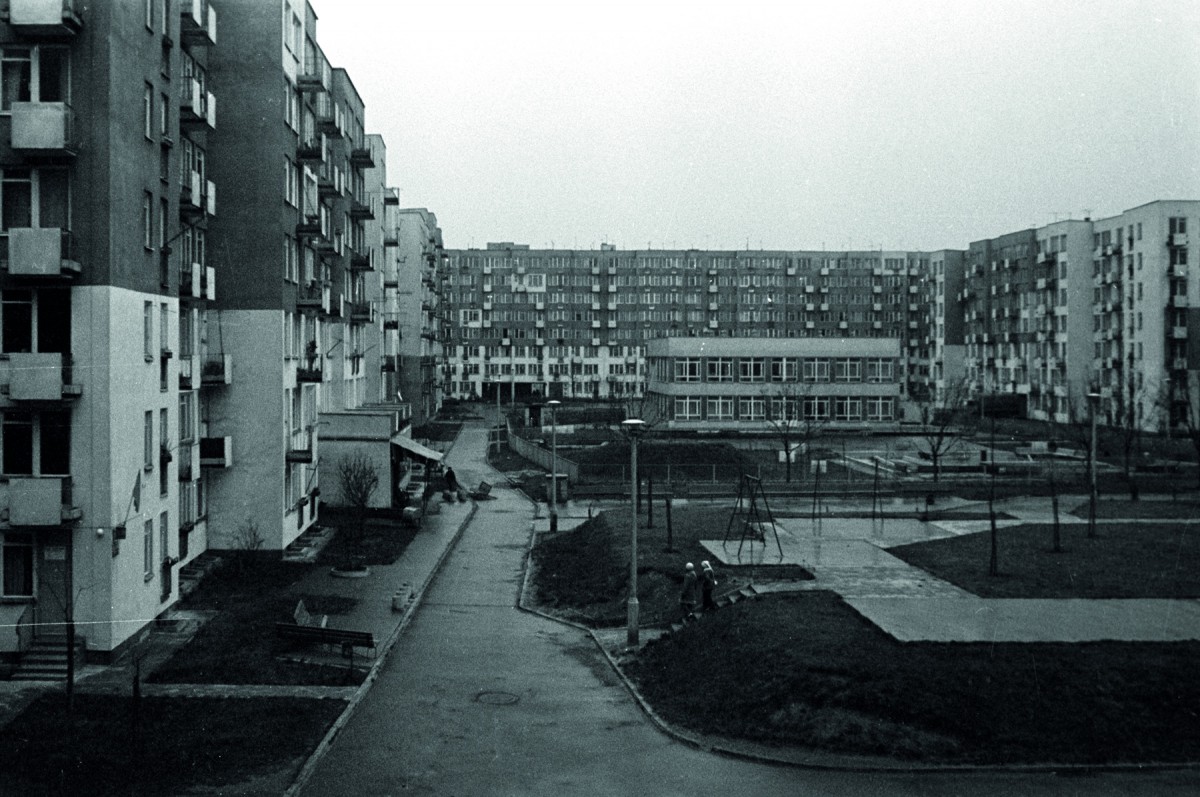Architect and pedagogue Oskar Hansen influenced an entire generation of Polish artists and architects and is remembered for his theory of Open Form–a utopic architectural form melding public and private space. Open Form worked well when applied to the intellectual artwork of his students, for example the Polish neo-avant-garde duo KwieKulik, who count Hansen as a major influence. But when applied to actual architecture, such as the winding Warsaw housing project Przyczółek Grochowski, Open Form proved dysfunctional–a typical case of theory run amok with no heed paid to practicalities. In the case of Przyczółek Grochowski, the openness of the housing project’s passageways and facades were ideal for burglars to slip in and out of buildings unnoticed.
Below, photographer and journalist Filip Springer investigates the legacy of Hansen and Przyczółek Grochowski for Asymptote Journal. The full longread, very much worth your time, available here.
Oskar Hansen’s book Towards Open Form was published in 2005. In it he addresses the Przyczółek Grochowski and its problems:
“The public space-time I’m talking about in the interview no longer exists . . . Grilles put across the galleries undermined its functional-cognitive continuity, and the wire fences and ‘hedgerows’ of the ‘private’ gardens destroyed the free leisure space that had been created with such difficulty . . . The bars and barriers have divided the integrated, friendly space into an unfriendly, disintegrated space that is conducive to aversion between people and anti-social behaviour.”
In this, his last public statement, the Professor proposed resolving the residents’ problems by means that were not even available at the time. The noise of passers-by and running children on the galleries was to be muffled with sound-absorbent mats; doors could be prevented from banging shut by means of photocell-operated automatic door closers; peeking into people’s apartments from the galleries could be prevented with one-way windows, and vandalism deterred with the help of security guards.
“These inconveniences won’t be dealt with by putting bars across the passageways,” the Professor concluded.
Lucjan Nowicki, who for many years was a member of the housing development’s board and now sits on the Association’s audit commission, invites me to meet him in his office. We can have a chat.
“It would all work out if someone would just keep these people in check, you know, a kind of Angel. Remember Alternatywy 4? But there aren’t any Angels here and there never were.”
Oskar Hansen again, in his last interview: “People came to the Przyczółek prejudiced, and they got something other than they expected. They were disappointed because their dreams didn’t come true. But does that mean that an architect shouldn’t propose anything that the people aren’t used to? That’s the fundamental question. And, above all, it’s a moral question.”
